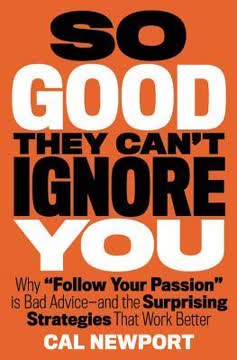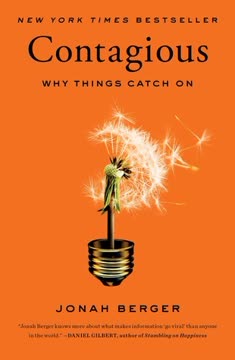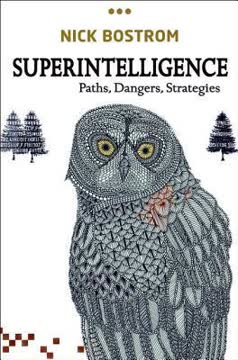Key Takeaways
1. Sensory branding engages all five senses to create powerful consumer connections
"The goal is to build a very loyal relationship over a long period of time."
Holistic approach: Sensory branding aims to create a complete sensory experience that goes beyond traditional visual and auditory marketing. By engaging all five senses – sight, sound, touch, smell, and taste – brands can forge stronger emotional connections with consumers.
Emotional engagement: This approach taps into the power of sensory memories and associations, creating a more immersive and memorable brand experience. For example:
- Singapore Airlines' signature scent, Stefan Floridian Waters
- The distinctive sound of a Harley-Davidson engine
- The tactile experience of unboxing an Apple product
Long-term loyalty: By creating a multisensory brand identity, companies can differentiate themselves in a crowded marketplace and build lasting customer relationships. This strategy helps brands become an integral part of consumers' lives, fostering loyalty and repeat business.
2. Visual and auditory elements dominate current branding, leaving room for tactile, olfactory, and gustatory innovation
"As human beings, we're by far at our most receptive when we're operating on all five tracks (our five senses), yet very few advertising campaigns bother to use more than sight and sound to convey their messages."
Current limitations: Most brands focus primarily on visual and auditory elements in their marketing efforts, neglecting the potential of touch, smell, and taste. This narrow approach misses opportunities to create more powerful and memorable brand experiences.
Untapped potential: Innovative brands are beginning to explore the full sensory spectrum:
- Scent marketing in retail spaces
- Textured packaging and product designs
- Branded sounds for products and environments
Competitive advantage: Companies that successfully integrate all five senses into their branding strategy can gain a significant edge over competitors. By creating unique sensory touchpoints, brands can stand out in consumers' minds and create stronger emotional connections.
3. Smashable brands have distinct, recognizable elements beyond their logo
"Even blindfolded, you'd know you're holding a classic Coke bottle. And if that bottle were dropped and smashed, someone else would be able to tell at first glance what it was."
Beyond visual identity: A truly smashable brand is recognizable even when its logo or name is removed. This concept emphasizes the importance of creating distinctive brand elements across all sensory touchpoints.
Iconic examples:
- Coca-Cola's contour bottle shape
- Apple's minimalist product design
- Harley-Davidson's distinctive engine sound
Creating smashable elements:
- Unique product shapes or textures
- Signature scents or flavors
- Distinctive sounds or music
By developing these recognizable sensory cues, brands can create a more robust and memorable identity that resonates with consumers on multiple levels.
4. Sound branding creates emotional connections and influences consumer behavior
"Sound is emotionally direct and should thus be considered a powerful tool."
Emotional impact: Sound has a unique ability to evoke emotions and create instant associations with brands. From jingles to product sounds, audio elements can significantly influence consumer perceptions and behavior.
Strategic applications:
- Intel's five-note sonic logo
- McDonald's "I'm Lovin' It" jingle
- The distinctive sound of a Lamborghini engine
Behavior influence: Research has shown that music tempo in retail environments can affect shopping behavior, with slower music leading to longer shopping times and increased sales. Brands can leverage sound to:
- Create a specific mood or atmosphere
- Reinforce brand identity
- Trigger positive memories and associations
5. Scent is the most potent sense for evoking memories and emotions in branding
"Smell is a potent wizard that transports us across thousands of miles and all the years we have lived."
Neurological connection: The olfactory system has a direct link to the brain's limbic system, which is responsible for emotions and memories. This makes scent a powerful tool for creating lasting brand associations.
Branding applications:
- Abercrombie & Fitch's signature store fragrance
- Singapore Airlines' custom cabin scent
- New car smell engineered by automotive brands
Memory trigger: Scents can instantly transport consumers to specific moments or experiences, making them an effective tool for building brand loyalty and recognition. Brands can use scent to:
- Create a unique brand signature
- Enhance product experiences
- Evoke nostalgia or positive emotions
6. Tactile experiences shape perceptions of quality and brand identity
"The way a brand feels has a lot to do with what sort of quality we attribute to the product."
Quality perception: The tactile qualities of a product or packaging can significantly influence consumers' perceptions of quality and value. Brands that pay attention to texture, weight, and other tactile elements can enhance their overall appeal.
Examples of tactile branding:
- Apple's focus on sleek, premium-feeling materials
- Coca-Cola's contoured glass bottle
- Luxury car brands' attention to interior textures and controls
Multisensory integration: Combining tactile elements with visual, auditory, and olfactory cues can create a more cohesive and memorable brand experience. This holistic approach helps reinforce brand identity and quality perceptions across multiple touchpoints.
7. Taste, though limited in application, can create unique brand associations
"Apart from the food and beverage industry, taste is a tricky, elusive sense for most brands to incorporate."
Niche opportunity: While taste is primarily relevant to food and beverage brands, it can be creatively applied in other industries to create unique brand experiences.
Innovative applications:
- Colgate's patented toothpaste flavor
- Flavored envelope adhesives for direct mail campaigns
- Edible packaging or promotional materials
Cross-sensory associations: Even when taste can't be directly incorporated, brands can evoke taste-related associations through other sensory cues:
- Visual imagery of food or flavors
- Scents that trigger taste memories
- Descriptive language that appeals to the gustatory sense
By thinking creatively about taste-related branding, companies can differentiate themselves and create memorable sensory experiences.
8. Successful brands integrate multiple sensory touchpoints for a holistic experience
"The more sensory touch points consumers can access when they're thinking about buying a brand, the higher the number of sensory memories are activated."
Synergy across senses: Brands that successfully integrate multiple sensory elements create a more immersive and memorable experience for consumers. This holistic approach reinforces brand identity and strengthens emotional connections.
Examples of multisensory branding:
- Disney theme parks (sights, sounds, smells, tastes, and tactile experiences)
- Starbucks (aroma of coffee, music, store design, taste of products)
- Luxury car brands (visual design, engine sound, leather smell, touch of controls)
Benefits of integration:
- Stronger brand recall
- Enhanced emotional connections
- Increased perceived value and quality
By creating a cohesive sensory experience across all touchpoints, brands can differentiate themselves and create lasting impressions on consumers.
9. Religious-like devotion to brands stems from appealing to emotions and creating rituals
"By its very longevity, religion presumes an authentic, loyal, lifelong relationship with its adherents."
Emotional connection: Brands that inspire intense loyalty often tap into deep emotional needs and desires, similar to how religions provide comfort, community, and purpose.
Key elements of brand devotion:
- Sense of belonging (brand communities)
- Clear vision and values
- Storytelling and mythology
- Rituals and traditions
Examples of brand devotion:
- Apple's cult-like following and product launch events
- Harley-Davidson's community of riders and rallies
- Nike's "Just Do It" philosophy and athlete sponsorships
By incorporating these elements, brands can create a sense of meaning and identity for consumers, fostering long-term loyalty and advocacy.
10. The future of branding lies in creating multisensory, tradition-anchored experiences
"Over the next decade, sensory branding will be adopted by three categories of industry: the sensory pioneers, the sensory adopters, and the sensory followers."
Industry evolution: As technology advances and consumer expectations evolve, more industries will embrace sensory branding to create distinctive and immersive experiences.
Emerging trends:
- Augmented and virtual reality experiences
- Interactive packaging and products
- Personalized sensory experiences based on consumer data
Challenges and opportunities:
- Balancing innovation with authenticity
- Integrating digital and physical sensory experiences
- Creating consistent sensory branding across global markets
The most successful brands of the future will be those that can create holistic, multisensory experiences that resonate with consumers on an emotional level while staying true to their core values and traditions.
Last updated:
FAQ
What's "Brand Sense" by Martin Lindstrom about?
- Multisensory Branding: "Brand Sense" explores how brands can build powerful connections with consumers by engaging all five senses: touch, taste, smell, sight, and sound.
- Case Studies and Research: The book includes numerous case studies and research findings that illustrate the effectiveness of sensory branding in creating strong brand loyalty.
- Sensory Branding Strategy: Lindstrom provides a framework for companies to develop a sensory branding strategy that can differentiate them in a crowded market.
- Emotional Connection: The book emphasizes the importance of creating an emotional connection with consumers through sensory experiences.
Why should I read "Brand Sense"?
- Innovative Insights: The book offers innovative insights into how sensory experiences can enhance brand perception and consumer loyalty.
- Practical Applications: It provides practical advice and examples that can be applied to real-world marketing and branding strategies.
- Understanding Consumer Behavior: Readers gain a deeper understanding of consumer behavior and how sensory elements influence purchasing decisions.
- Competitive Advantage: By implementing the strategies discussed, businesses can gain a competitive advantage in their respective industries.
What are the key takeaways of "Brand Sense"?
- Sensory Integration: Brands should integrate all five senses into their marketing strategies to create a more memorable and engaging consumer experience.
- Emotional Engagement: Sensory branding can lead to stronger emotional engagement and brand loyalty among consumers.
- Brand Differentiation: Utilizing sensory elements can help brands stand out in a crowded marketplace and create a unique identity.
- Long-term Loyalty: Sensory branding can foster long-term loyalty by creating a deeper connection between the brand and the consumer.
How does Martin Lindstrom define sensory branding in "Brand Sense"?
- Multisensory Approach: Sensory branding involves using all five senses to create a holistic brand experience that resonates with consumers.
- Emotional Connection: It aims to establish an emotional connection by appealing to the senses, which can lead to increased brand loyalty.
- Brand Identity: Sensory branding helps in building a distinct brand identity that is easily recognizable and memorable.
- Consumer Experience: The approach focuses on enhancing the overall consumer experience by making it more immersive and engaging.
What are some examples of successful sensory branding mentioned in "Brand Sense"?
- Singapore Airlines: The airline uses a signature scent, Stefan Floridian Waters, to create a consistent and memorable brand experience.
- Coca-Cola: The iconic shape of the Coke bottle and the sound of opening a can are examples of sensory branding elements.
- Apple: The design and tactile feel of Apple products, along with their distinct sound cues, contribute to their strong brand identity.
- Starbucks: The aroma of coffee and the ambiance of their stores are key sensory elements that enhance the Starbucks brand experience.
What is the "Smash Your Brand" philosophy in "Brand Sense"?
- Brand Fragmentation: The philosophy involves breaking down a brand into its sensory components to ensure each element is strong and recognizable.
- Integration: It emphasizes the need for all sensory elements to be fully integrated into the brand's identity.
- Recognition Without Logo: A brand should be recognizable even without its logo, relying on sensory elements like color, sound, and shape.
- Consistency: Consistent use of sensory elements across all touchpoints strengthens the brand's identity and consumer connection.
How does "Brand Sense" suggest brands can create a sense of belonging?
- Community Building: Brands should foster a sense of community among their consumers, similar to how religions create a sense of belonging.
- Shared Values: Establishing shared values and goals can help create a strong bond between the brand and its consumers.
- Brand Clubs: Encouraging the formation of brand clubs or communities can enhance consumer loyalty and engagement.
- Emotional Connection: A sense of belonging is strengthened through emotional connections facilitated by sensory branding.
What role does storytelling play in sensory branding according to "Brand Sense"?
- Emotional Engagement: Storytelling is a powerful tool for creating emotional engagement and making the brand experience more relatable.
- Brand Narrative: A compelling brand narrative can enhance the sensory experience and make it more memorable.
- Consumer Connection: Stories allow consumers to connect with the brand on a personal level, fostering loyalty and advocacy.
- Cultural Relevance: Incorporating culturally relevant stories can broaden the brand's appeal and resonance with diverse audiences.
What are the best quotes from "Brand Sense" and what do they mean?
- "A brand has to transform itself into a sensory experience that goes far beyond what we see." This quote emphasizes the importance of engaging all senses to create a memorable brand experience.
- "The more tracks on which you or I can record an experience, the better we remember it." It highlights the role of multisensory experiences in enhancing memory and brand recall.
- "Brands that create an emotional connection to consumers are much stronger than those that don’t." This underscores the significance of emotional engagement in building brand loyalty.
- "The stronger the tradition, the more smashable it becomes." It suggests that well-established traditions can enhance a brand's identity and consumer connection.
How does "Brand Sense" address the future of branding?
- Evolving Landscape: The book discusses how branding is evolving with the rise of digital media and changing consumer expectations.
- Sensory Pioneers: Industries like automotive and pharmaceuticals are leading the way in adopting sensory branding strategies.
- Technological Integration: Future branding will involve integrating technology to create more immersive sensory experiences.
- Holistic Approach: Brands will need to adopt a holistic approach that combines traditional and sensory branding elements to stay competitive.
What industries are identified as sensory pioneers in "Brand Sense"?
- Automobile Industry: Known for its focus on sound, smell, and tactile elements to enhance the driving experience.
- Pharmaceutical Industry: Uses sensory elements like color and shape to differentiate products and build brand loyalty.
- Telecommunications Industry: Incorporates sound and tactile feedback in mobile devices to create a distinct brand experience.
- Food Industry: Focuses on taste and smell to create memorable brand experiences and foster consumer loyalty.
How can brands optimize the match between perception and reality according to "Brand Sense"?
- Consumer Expectations: Brands should align their sensory elements with consumer expectations to enhance brand perception.
- Authenticity: Ensuring that sensory elements are authentic and consistent with the brand's identity is crucial.
- Feedback Loops: Regularly gathering consumer feedback can help brands adjust their sensory elements to better meet expectations.
- Continuous Improvement: Brands should continuously refine their sensory elements to maintain a strong connection with consumers.
Review Summary
Brand Sense receives mixed reviews, with ratings ranging from 1 to 5 stars. Positive reviews praise its insights into sensory branding and real-world examples. Critics find it repetitive and outdated. Many readers appreciate Lindstrom's exploration of how brands can engage all five senses to create stronger connections with consumers. Some highlight the book's discussion of brand loyalty and religious-like devotion to certain products. However, others feel the content could have been condensed and that some ideas are questionable or overstated.
Similar Books
Download PDF
Download EPUB
.epub digital book format is ideal for reading ebooks on phones, tablets, and e-readers.















